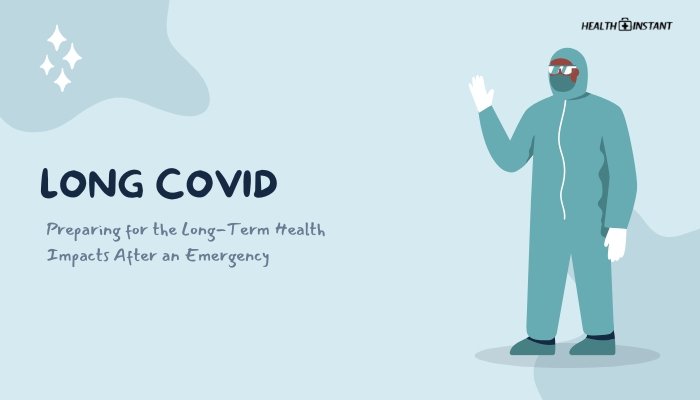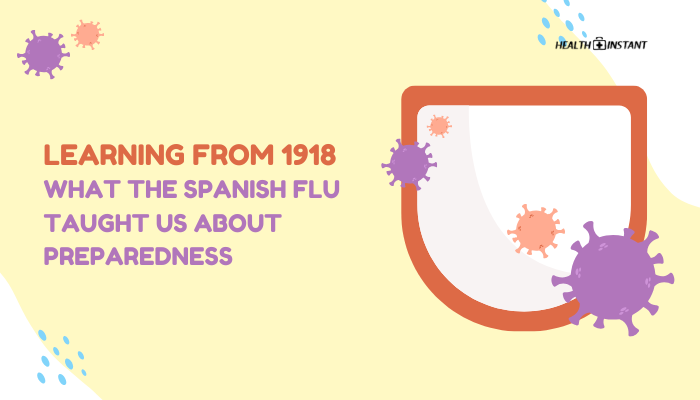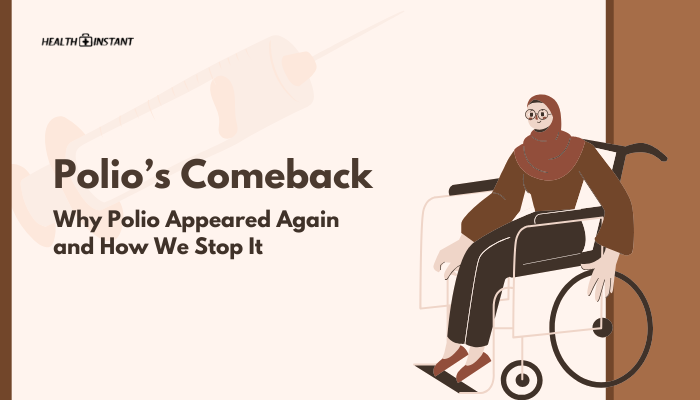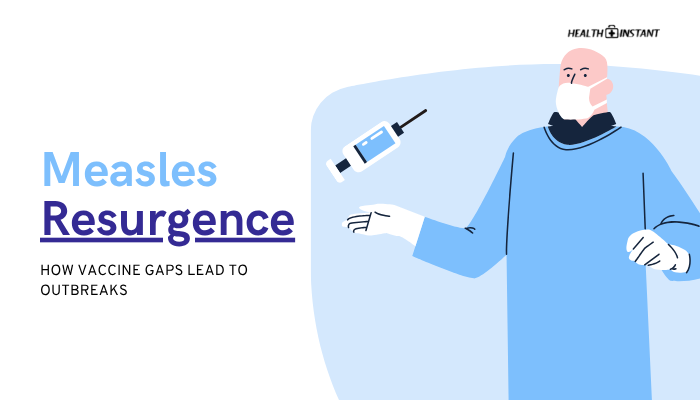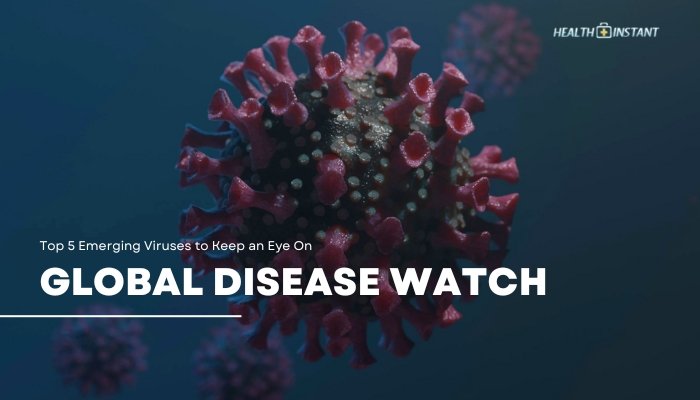Introduction
Emergencies such as pandemics often leave an enduring impact beyond their immediate crisis. While widespread attention goes to controlling the initial outbreak, the long-term health repercussions can be profound.
During the COVID-19 pandemic, many individuals faced weeks of acute infection, yet some found that symptoms persisted or re-emerged well after testing negative. These lingering effects—collectively called “Long COVID”—affect the body and mind in ways that can disrupt daily life.
Long COVID, also referred to as Post-Acute Sequelae of SARS-CoV-2 infection (PASC), includes a spectrum of symptoms persisting or appearing weeks to months after an initial COVID-19 illness. People experiencing these effects may find it challenging to work, exercise, or think clearly.
In some cases, complications can last for a year or more. Researchers are still unraveling why Long COVID happens, who is most at risk, and the best ways to manage it.
The transition from crisis response to long-term care requires a shift in mindset. Systems that handled COVID-19 hospitalizations must now adapt to chronic care needs, providing support for patients navigating fatigue, cardiac issues, neurological symptoms, or mental health strains.
At the same time, households must adjust routines to accommodate new limitations or extensive rehabilitation. This article offers an in-depth look at Long COVID, its potential impacts, and practical steps for preparedness.
By considering how to manage ongoing health challenges early, individuals and communities can build resilience and ensure continuity of care long after an emergency subsides.
What Is Long COVID?
Long COVID describes a range of symptoms that endure or reoccur weeks or months after an initial SARS-CoV-2 infection. The typical acute phase of COVID-19 often lasts up to two or three weeks. However, some individuals report ongoing issues—respiratory difficulties, fatigue, mental confusion, or other complaints—well beyond the infection window.
Health authorities, including the World Health Organization (WHO) and the Centers for Disease Control and Prevention (CDC), have recognized this condition as real and in need of dedicated study.
Some individuals feel better after a few weeks, only to experience relapses of fatigue, aches, or neurological symptoms later. There is not a single cause or manifestation; rather, Long COVID is a broad category spanning multiple bodily systems.
This condition highlights that the crisis of a pandemic does not cease when the infection rates fall. A subset of patients continues to require medical attention, rehabilitation, and psychosocial support long after the emergency period.
Long COVID is also known by other names:
- Post-Acute Sequelae of SARS-CoV-2 (PASC)
- Post-COVID Syndrome
- Chronic COVID
While terms differ, all refer to the phenomenon of persistent or delayed onset symptoms post-COVID infection. Understanding this condition is crucial to supporting long-term well-being and mitigating the pandemic’s lasting impact.
Recognizing Long COVID Symptoms
Long COVID encompasses diverse complaints. Some of the more commonly reported symptoms include:
- Fatigue
- Persistent exhaustion even after mild activity.
- “Crashes” or post-exertional malaise that can last for days.
- Persistent exhaustion even after mild activity.
- Respiratory Problems
- Ongoing shortness of breath, chest tightness, or reduced exercise tolerance.
- Difficulty taking deep breaths or a sensation of not getting enough air.
- Ongoing shortness of breath, chest tightness, or reduced exercise tolerance.
- Neurological Issues
- Brain fog, memory lapses, or difficulty concentrating.
- Headaches, dizziness, or sleep disturbances.
- Brain fog, memory lapses, or difficulty concentrating.
- Musculoskeletal Pain
- Joint stiffness or muscle aches.
- Chronic pain syndromes that flare unpredictably.
- Joint stiffness or muscle aches.
- Cardiovascular Complaints
- Heart palpitations, arrhythmias, or chest pain.
- Tachycardia (rapid heartbeat) upon minimal exertion.
- Heart palpitations, arrhythmias, or chest pain.
- Digestive and Gastrointestinal Symptoms
- Nausea, diarrhea, or abdominal pain.
- Change in appetite or difficulties with certain foods.
- Nausea, diarrhea, or abdominal pain.
- Mental Health Concerns
- Anxiety, depression, or mood swings.
- Stress from prolonged illness affecting self-image and social roles.
- Anxiety, depression, or mood swings.
These symptoms often overlap. One patient may primarily battle fatigue and memory problems, while another might focus on chest pain and palpitations. Fluctuations can frustrate both patients and clinicians.
On good days, people might attempt normal activities—only to experience a rebound of symptoms afterwards. Early recognition that these patterns may signify Long COVID can encourage prompt investigation and management, instead of dismissing them as stress or normal recovery.
Possible Mechanisms Behind Long COVID
Although research remains ongoing, several theories attempt to explain why some individuals develop protracted symptoms:
- Viral Persistence or Reservoir
- SARS-CoV-2 fragments could remain in certain tissues, evading the immune system but still triggering inflammation.
- SARS-CoV-2 fragments could remain in certain tissues, evading the immune system but still triggering inflammation.
- Autoimmune Reactions
- The infection may prompt the body’s immune defenses to attack its own cells, resulting in autoimmune-like symptoms.
- The infection may prompt the body’s immune defenses to attack its own cells, resulting in autoimmune-like symptoms.
- Organ Damage
- Severe acute disease can leave residual damage to lungs, heart, or other organs. Scarring or reduced function might not fully heal, leading to chronic problems.
- Severe acute disease can leave residual damage to lungs, heart, or other organs. Scarring or reduced function might not fully heal, leading to chronic problems.
- Endothelial Dysfunction
- COVID-19 can affect blood vessels, causing microclots and reduced blood flow. Over time, these vascular changes can cause fatigue, pain, or neurological issues.
- COVID-19 can affect blood vessels, causing microclots and reduced blood flow. Over time, these vascular changes can cause fatigue, pain, or neurological issues.
- Immune Dysregulation
- The immune system may remain overactive or misdirected post-infection, prolonging inflammation.
- The immune system may remain overactive or misdirected post-infection, prolonging inflammation.
- Neurological Impact
- The virus can affect the nervous system directly or indirectly, altering signals and leading to brain fog, dizziness, or other cognitive effects.
- The virus can affect the nervous system directly or indirectly, altering signals and leading to brain fog, dizziness, or other cognitive effects.
Unraveling these pathways requires extensive collaboration among clinicians, immunologists, neurologists, and other specialists. Pinpointing the exact mechanism can help refine treatments, whether they focus on reducing inflammation, modulating the immune system, or rehabilitating damaged organs.
Risk Factors and Populations Affected
Long COVID does not discriminate strictly by age or background. However, trends suggest certain groups may face higher vulnerability:
- Severity of Initial Illness
- Those hospitalized or requiring intensive care for COVID-19 show greater risk of subsequent problems.
- Those hospitalized or requiring intensive care for COVID-19 show greater risk of subsequent problems.
- Pre-existing Conditions
- People with cardiovascular disease, diabetes, obesity, or chronic lung issues may have more persistent symptoms.
- People with cardiovascular disease, diabetes, obesity, or chronic lung issues may have more persistent symptoms.
- Older Adults
- While Long COVID can strike any age, older patients with weaker immune systems face a more difficult recovery process.
- While Long COVID can strike any age, older patients with weaker immune systems face a more difficult recovery process.
- Women
- Some studies indicate female patients might be more prone to autoimmune responses or experience higher rates of chronic symptoms, although research is ongoing.
- Some studies indicate female patients might be more prone to autoimmune responses or experience higher rates of chronic symptoms, although research is ongoing.
- Socioeconomic Disparities
- Limited healthcare access, economic constraints, or living environments can hamper full recovery and lead to prolonged complications.
- Limited healthcare access, economic constraints, or living environments can hamper full recovery and lead to prolonged complications.
- Unvaccinated Individuals
- Vaccination often reduces acute severity and might lower the chances of Long COVID, although it does not eliminate the possibility entirely.
- Vaccination often reduces acute severity and might lower the chances of Long COVID, although it does not eliminate the possibility entirely.
Understanding risk factors helps health systems prioritize resources. Yet, even those with mild acute infections and no apparent vulnerabilities sometimes develop long-term effects. This unpredictability underscores the need for broad awareness, consistent follow-up, and readiness to provide post-infection support at various scales.
Preparing for Long-Term Health Impacts
Adapting to the idea that an emergency can leave lasting health effects is vital for individuals, healthcare providers, employers, and policymakers. Response efforts must include post-emergency planning that integrates the possibility of chronic conditions.
Healthcare System Adaptations
- Post-COVID Clinics
- Specialized centers where multidisciplinary teams (pulmonologists, cardiologists, neurologists, mental health professionals) collaborate to manage Long COVID symptoms.
- Streamlined referral pathways, ensuring patients do not hop between different specialists without coordination.
- Specialized centers where multidisciplinary teams (pulmonologists, cardiologists, neurologists, mental health professionals) collaborate to manage Long COVID symptoms.
- Training Primary Care Providers
- Educating family physicians to recognize and manage Long COVID can reduce misdiagnoses.
- Ongoing professional development about new research findings fosters evidence-based care.
- Educating family physicians to recognize and manage Long COVID can reduce misdiagnoses.
- Home Health Support
- Many patients experience functional impairments or severe fatigue. Home visits for physical therapy or nursing can facilitate gradual recovery.
- Telemedicine expansions enable follow-up without exhausting or infecting others.
- Many patients experience functional impairments or severe fatigue. Home visits for physical therapy or nursing can facilitate gradual recovery.
Community and Workplace Support
- Flexible Work Policies
- Employers can offer remote or part-time roles, adjusting tasks for those with ongoing fatigue or brain fog.
- Clear sick-leave policies and possible accommodations (like extended paid leave) remove pressure from struggling employees.
- Employers can offer remote or part-time roles, adjusting tasks for those with ongoing fatigue or brain fog.
- Public Awareness Campaigns
- Highlighting the reality of Long COVID helps families, neighbors, and community organizations recognize the condition and show empathy.
- Government health departments can share guidelines on self-care, re-integration, and resources.
- Highlighting the reality of Long COVID helps families, neighbors, and community organizations recognize the condition and show empathy.
- Accessible Resources
- Clear listings of local support groups, mental health hotlines, or specialized medical services.
- Nonprofits or community centers hosting educational sessions about coping with chronic health issues.
- Clear listings of local support groups, mental health hotlines, or specialized medical services.
Household and Personal Planning
- Financial Preparedness
- If chronic illness disrupts work, an emergency fund or disability insurance can offset sudden income loss.
- Knowledge of local benefits or grants can ease monetary pressures.
- If chronic illness disrupts work, an emergency fund or disability insurance can offset sudden income loss.
- Home Adjustments
- For severe cases, rearranging living spaces to be more “disability-friendly” helps, such as handrails, avoiding stairs if mobility is compromised, and ensuring easy access to bathrooms.
- For severe cases, rearranging living spaces to be more “disability-friendly” helps, such as handrails, avoiding stairs if mobility is compromised, and ensuring easy access to bathrooms.
- Family Roles
- Other family members may take on cooking, child supervision, or errands if a recovering individual struggles with energy.
- Communication about limitations fosters understanding and sets realistic expectations.
- Other family members may take on cooking, child supervision, or errands if a recovering individual struggles with energy.
Preparing for possible long-haul effects extends the notion of emergency readiness. It is not only about having supplies (food, medication) for a short crisis but also about building structures for ongoing care and life adjustments.
Strategies for Managing Long COVID
People with Long COVID benefit from a combination of medical guidance, self-care, and mental health support. A collaborative approach ensures each dimension of well-being is addressed.
Medical Evaluations and Follow-Ups
- Initial Assessment
- Conduct blood tests, imaging, or specialized exams (e.g., echocardiograms, pulmonary function tests) to rule out organ damage or complications.
- Keep thorough medical records, tracking symptoms over time.
- Conduct blood tests, imaging, or specialized exams (e.g., echocardiograms, pulmonary function tests) to rule out organ damage or complications.
- Ongoing Monitoring
- Schedule regular check-ups to adjust treatments.
- Review changes in vital signs (blood pressure, oxygen saturation), mental capacity (focus, memory), or exercise tolerance.
- Schedule regular check-ups to adjust treatments.
- Medication Management
- Some patients might need inhalers for respiratory issues, beta-blockers for tachycardia, or anti-inflammatory drugs for joint pains.
- A personalized medication regimen, overseen by a qualified physician, can mitigate specific symptoms.
- Some patients might need inhalers for respiratory issues, beta-blockers for tachycardia, or anti-inflammatory drugs for joint pains.
Lifestyle Modifications and Self-Care
- Pacing and Energy Management
- The principle of “pace, plan, and prioritize” helps ration limited energy.
- Breaking tasks into smaller chunks reduces post-exertional crashes.
- The principle of “pace, plan, and prioritize” helps ration limited energy.
- Nutrition and Hydration
- Balanced diets, with sufficient protein, vitamins, and minerals, support tissue repair and immune function.
- Avoiding processed foods, excessive sugar, or caffeine can prevent spikes or crashes in energy.
- Balanced diets, with sufficient protein, vitamins, and minerals, support tissue repair and immune function.
- Gentle Physical Activity
- Overexertion can worsen symptoms. Low-impact exercises (yoga, tai chi, or short walks) maintain mobility without depleting energy reserves.
- Some patients benefit from graded exercise therapy, while others find even mild exertion triggers relapses, underscoring individual variation.
- Overexertion can worsen symptoms. Low-impact exercises (yoga, tai chi, or short walks) maintain mobility without depleting energy reserves.
- Sleep Hygiene
- Setting regular bedtimes, minimizing screen exposure, or practicing relaxation techniques can improve rest and reduce fatigue flare-ups.
- Setting regular bedtimes, minimizing screen exposure, or practicing relaxation techniques can improve rest and reduce fatigue flare-ups.
Rehabilitation Approaches
- Physical Therapy
- Structured sessions to rebuild strength and endurance.
- May include respiratory exercises or guidance on posture and safe movement.
- Structured sessions to rebuild strength and endurance.
- Occupational Therapy
- Focuses on adapting daily activities to an individual’s current capacities.
- Suggests assistive devices or modifies routines for safer, more manageable tasks.
- Focuses on adapting daily activities to an individual’s current capacities.
- Cognitive Rehabilitation
- For brain fog or memory lapses, specialized exercises or coaching can enhance concentration, mental organization, or problem-solving.
- Cognitive behavioral therapy (CBT) may help reframe stressors and improve coping skills.
- For brain fog or memory lapses, specialized exercises or coaching can enhance concentration, mental organization, or problem-solving.
Mental Health Considerations
- Psychological Support
- Long COVID can isolate people from friends or hobbies. Talking with a counselor or psychologist alleviates feelings of frustration or hopelessness.
- Online peer support groups or forums reduce loneliness by connecting patients with shared experiences.
- Long COVID can isolate people from friends or hobbies. Talking with a counselor or psychologist alleviates feelings of frustration or hopelessness.
- Mind-Body Techniques
- Meditation, breathing exercises, or progressive muscle relaxation can calm anxiety and improve mental clarity.
- Gentle practices like mindfulness may help patients accept current limitations while planning step-by-step progress.
- Meditation, breathing exercises, or progressive muscle relaxation can calm anxiety and improve mental clarity.
- Resilience Building
- Celebrating small improvements fosters hope.
- Setting realistic goals helps avoid discouragement from slow recovery.
- Celebrating small improvements fosters hope.
Each strategy works best when tailored to an individual’s unique symptom profile. People often try various approaches, adjusting as they learn which methods yield improvements or provoke setbacks.
Ensuring Continuity of Care and Resources
Recovery from Long COVID is rarely linear. Symptoms can ebb and flow, requiring extended follow-up. To maintain consistent support:
- Integrated Care Pathways
- Encourage referral networks among primary care providers, specialists, and therapists.
- Unified digital health records that track patient progress over time minimize repeated testing or conflicting recommendations.
- Encourage referral networks among primary care providers, specialists, and therapists.
- Remote Monitoring
- Telehealth check-ins or wearable devices measuring heart rate, oxygen, or activity can detect early warning signs of deterioration.
- Encourages patients to remain engaged without frequent, exhausting clinic visits.
- Telehealth check-ins or wearable devices measuring heart rate, oxygen, or activity can detect early warning signs of deterioration.
- Insurance and Reimbursement
- Coverage for rehabilitative services, mental health counseling, or medication should be clarified.
- Addressing coverage gaps is essential for broad community access, especially in underprivileged areas.
- Coverage for rehabilitative services, mental health counseling, or medication should be clarified.
- Patient Advocacy
- Support from patient-led organizations can guide individuals through bureaucratic challenges or direct them to specialized resources.
- Encouraging patient voices in research ensures that real-world experiences shape clinical priorities.
- Support from patient-led organizations can guide individuals through bureaucratic challenges or direct them to specialized resources.
Sustained engagement is crucial because many Long COVID patients may require months or years of ongoing management. A stable, well-coordinated approach boosts their quality of life and reduces complications that strain healthcare systems over time.
Long COVID in Global Health Context
As countries shifted from pandemic crisis mode to rebuilding, Long COVID gained attention worldwide. The sheer number of COVID-19 survivors means hundreds of thousands—if not millions—could develop lasting ailments. In global health terms:
- Economic Impact
- Productivity losses from a persistently unwell workforce.
- Higher medical costs for chronic treatments and rehabilitations.
- Productivity losses from a persistently unwell workforce.
- Health Equity
- Populations with limited access to post-acute care risk worse outcomes.
- Migrant workers or refugees might lack stable healthcare or social structures to handle persistent symptoms.
- Populations with limited access to post-acute care risk worse outcomes.
- Surveillance Systems
- Public health agencies must track not just new infections but also the incidence of Long COVID.
- Data on prevalence, duration, and severity informs resource allocation.
- Public health agencies must track not just new infections but also the incidence of Long COVID.
- Comparisons to Other Post-Viral Syndromes
- Conditions like ME/CFS (Myalgic Encephalomyelitis/Chronic Fatigue Syndrome) share similarities with Long COVID.
- The heightened research interest might yield insights beneficial to multiple post-viral disorders.
- Conditions like ME/CFS (Myalgic Encephalomyelitis/Chronic Fatigue Syndrome) share similarities with Long COVID.
Addressing these points takes a multi-stakeholder effort, from policy changes that secure funding for research to cross-border collaborations on clinical trials. The lessons of COVID-19 can guide how to integrate long-term care for future pandemics or major emergencies.
Common Myths and Misconceptions
Myth 1: Long COVID Is All in the Mind
Reality: While stress or anxiety can exacerbate symptoms, Long COVID stems from tangible biological processes. Imaging tests or blood work often reveal inflammation or organ stress. Psychological support is helpful but does not negate the physiological basis.
Myth 2: Only Those Who Had Severe COVID-19 Get Long COVID
Reality: Even mild or asymptomatic cases can lead to persistent symptoms. Severity during the acute phase does not fully predict long-term outcomes.
Myth 3: Vaccinated Individuals Cannot Develop Long COVID
Reality: Vaccines reduce the risk and likely the severity of Long COVID, but do not offer an absolute guarantee. Breakthrough infections can still result in chronic issues, although they may be less frequent or less intense.
Myth 4: Long COVID Symptoms Are Permanent
Reality: Many patients improve over time, although recovery can be slow and uneven. Some may see near-complete resolution, while others continue managing residual effects. Long-term data is still evolving.
Looking Ahead: Research and Policy Directions
- Longitudinal Cohort Studies
- Tracking large numbers of COVID-19 survivors for years clarifies the natural history of Long COVID.
- Evaluates risk factors, comorbidities, or specific interventions that aid recovery.
- Tracking large numbers of COVID-19 survivors for years clarifies the natural history of Long COVID.
- Clinical Trials for Targeted Therapies
- Investigating antiviral drugs, immune modulators, or rehabilitative protocols.
- Potential for repurposing existing medications (e.g., anti-inflammatories) if they reduce symptom severity.
- Investigating antiviral drugs, immune modulators, or rehabilitative protocols.
- International Collaboration
- Coordinated research agendas across nations expedite data sharing.
- Joint guidelines avoid fragmented approaches, especially for universal issues like brain fog, fatigue, or neurological changes.
- Coordinated research agendas across nations expedite data sharing.
- Policy Advocacy
- Formal recognition of Long COVID as a chronic condition by insurance and healthcare systems.
- Encouraging standardized tools for diagnosis, management, and disability assessment.
- Formal recognition of Long COVID as a chronic condition by insurance and healthcare systems.
- Vaccine Innovations
- Updated vaccines or boosters designed to reduce post-infection sequelae might further minimize the incidence of Long COVID.
- Ongoing refinement of mRNA or other platforms for broad coverage of variants.
- Updated vaccines or boosters designed to reduce post-infection sequelae might further minimize the incidence of Long COVID.
Policymakers and clinicians must stay agile. As fresh discoveries emerge, guidelines should evolve, ensuring care remains grounded in the latest evidence. A dynamic feedback loop—research informs practice, practice refines hypotheses—builds momentum toward effective solutions.
Conclusion
Long COVID stands as a stark reminder that a crisis can leave complex, enduring health outcomes well after infection rates recede. Individuals who survived COVID-19 might confront weeks or months of fluctuating symptoms that challenge their physical capacities and emotional balance. Understanding the wide variety of complaints—from breathlessness to brain fog—helps guide targeted interventions.
Preparing for these long-term impacts requires a multi-layered response. Healthcare systems should adapt, establishing specialized clinics and cross-disciplinary collaborations. Communities and workplaces can support those affected via flexible policies, empathy, and accessible resources. At the individual level, adopting pacing strategies, seeking rehabilitation, and maintaining mental wellness are essential steps. Meanwhile, research and policy must keep pace with emergent data, ensuring robust responses and equitable treatment options.
Above all, acknowledging the reality of Long COVID fosters a more resilient society. Recognizing the signs, championing evidence-based care, and integrating these lessons into broader emergency preparedness can lessen the strain of future health crises. It is not enough to handle the immediate wave of hospitalizations; one must look ahead and plan for how survivors will heal, adapt, and thrive in the aftermath.
References
- Greenhalgh T, Knight M, A’Court C, Buxton M, Husain L. Management of post-acute covid-19 in primary care. BMJ. 2020;370:m3026.
- Davis HE, Assaf GS, McCorkell L, Wei H, Low RJ, Re’em Y, et al. Characterizing long COVID in an international cohort: 7 months of symptoms and their impact. EClinicalMedicine. 2021;38:101019.
- Nalbandian A, Sehgal K, Gupta A, Madhavan MV, McGroder C, Stevens JS, et al. Post-acute COVID-19 syndrome. Nat Med. 2021;27(4):601-615.
- Carfi A, Bernabei R, Landi F; Gemelli Against COVID-19 Post-Acute Care Study Group. Persistent symptoms in patients after acute COVID-19. JAMA. 2020;324(6):603-605.
- Lambert NJ, Survivor Corps. COVID-19 “Long Hauler” symptoms survey report. Preprint. 2020.
- Chen C, Haupert SR, Zimmermann L, Shi X, Fritsche LG, Mukherjee B. Global prevalence of post-COVID-19 condition or long COVID: a meta-analysis and systematic review. J Infect Dis. 2022;226(9):1593-1607.
- Lopez-Leon S, Wegman-Ostrosky T, Perelman C, Sepulveda R, Rebolledo PA, Cuapio A, et al. More than 50 long-term effects of COVID-19: a systematic review and meta-analysis. Sci Rep. 2021;11(1):16144.
- World Health Organization. A clinical case definition of post COVID-19 condition by a Delphi consensus. Geneva: WHO; 2021.
- Centers for Disease Control and Prevention. Post-COVID conditions: information for healthcare providers. Atlanta (GA): CDC; 2022.
- Yong SJ. Long COVID or post-COVID-19 syndrome: putative pathophysiology, risk factors, and treatments. Infect Dis. 2021;53(10):737-754.
- Moldofsky H, Patcai J. Chronic widespread musculoskeletal pain, fatigue, depression and disordered sleep in chronic post-SARS syndrome. Pain. 2011;152(2):245-246.
- Groff D, Sun A, Ssentongo AE, Ba DM, Parsons N, Poudel GR, et al. Short-term and long-term rates of postacute sequelae of SARS-CoV-2 infection: a systematic review. JAMA Netw Open. 2021;4(10):e2128568.
Disclaimer: The information provided in this article is for educational purposes and should not replace professional medical advice. Individuals experiencing persistent symptoms after COVID-19 infection should consult qualified healthcare practitioners for personalized guidance.

